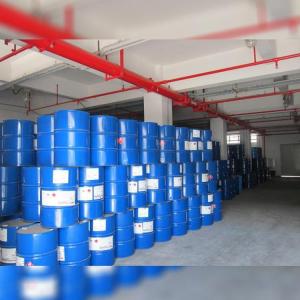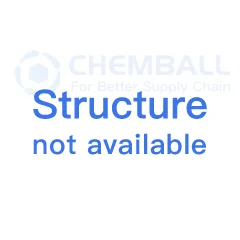
 Anhui, China
Anhui, China
 Anhui, China
Anhui, China
Send Email




Methanol / CAS 67-56-1
OVERVIEW
Uses
- Methyl Salicylate Methyl Salicylate
- Sucralose Sucralose
- Aspartame Aspartame
- Sodium Methoxide Sodium Methoxide
- Dimethyl Oxalate Dimethyl Oxalate
- Dimethyl Carbonate Dimethyl Carbonate
- 1,2-Propanediol 1,2-Propanediol
- Methyl Tert-Butyl Ether Methyl Tert-Butyl Ether
- Methyl Formate Methyl Formate
- Methyl 2-Chloropropionate Methyl 2-Chloropropionate
- Methyl Acrylate Methyl Acrylate
- Methyl Acetoacetate Methyl Acetoacetate
- Methyl 4-Methylbenzoate Methyl 4-Methylbenzoate
- Formaldehyde Formaldehyde
- Dimethyl Sulfoxide Dimethyl Sulfoxide
- Dimethyl Sulfoxide Dimethyl Sulfoxide
- Poly(Methyl Vinyl Ether-Alt-Maleic Anhydride) Poly(Methyl Vinyl Ether-Alt-Maleic Anhydride)
- Benzylamine Benzylamine
- Chlorpyrifos Chlorpyrifos
- Artemether Artemether
- Hydrogen Cyanide Hydrogen Cyanide
- Methyl Methacrylate Methyl Methacrylate
- Simvastatin Simvastatin
- Hydrogen Gas Hydrogen Gas
- Iminodibenzyl Iminodibenzyl
- 1-Methoxy-2-Propanol 1-Methoxy-2-Propanol
- Dipropylene Glycol Monomethyl Ether Dipropylene Glycol Monomethyl Ether
- 2-Methoxyethanol 2-Methoxyethanol
- Methyl Chloroacetate Methyl Chloroacetate
- Sodium Dithionite Sodium Dithionite
- Methyl Bromoacetate Methyl Bromoacetate
- 2-Butene-1,4-Diol 2-Butene-1,4-Diol
- Methyl 3-Methoxyacrylate Methyl 3-Methoxyacrylate
- Nifedipine Nifedipine
- Hydroxyethyl Starch Hydroxyethyl Starch
- N-Methylaniline N-Methylaniline
- N,N-Dimethylaniline N,N-Dimethylaniline
- Methyl 2-Hydroxypropanoate Methyl 2-Hydroxypropanoate
- 1,8-Diaminonaphthalene 1,8-Diaminonaphthalene
- Formamide Formamide
- Methylparaben Methylparaben
- Trimethyl Phosphite Trimethyl Phosphite
- Trometamol Trometamol
- Methyl Dihydrojasmonate Methyl Dihydrojasmonate
- Wintergreen Oil Wintergreen Oil
- Methyl Chloroglyoxylate Methyl Chloroglyoxylate
- Dimethylphosphorodithioate Dimethylphosphorodithioate
- 1-(Tetrahydrofuran-3-yl)Methanamine 1-(Tetrahydrofuran-3-yl)Methanamine
- Calcium D-Pantothenate Calcium D-Pantothenate
- Formaldehyde Formaldehyde
- Methyl Carbonochloridate Methyl Carbonochloridate
- Antioxidant TPPD Antioxidant TPPD
- Dimethyl Phosphonate Dimethyl Phosphonate
- Methyl 3,5-Dihydroxybenzoate Methyl 3,5-Dihydroxybenzoate
- Methyl 3-Hydroxybenzoate Methyl 3-Hydroxybenzoate
- O-Anisidine O-Anisidine
- O-Phenetidine O-Phenetidine
- P-Anisidine P-Anisidine
- 4-Ethoxyaniline 4-Ethoxyaniline
- 2-Phosphonobutane-1,2,4-Tricarboxylic Acid 2-Phosphonobutane-1,2,4-Tricarboxylic Acid
- Formaldehyde Formaldehyde
- Methyl 4-Tert-Butylbenzoate Methyl 4-Tert-Butylbenzoate
- Indole-3-Methanol Indole-3-Methanol
- 3,3'-Diindolylmethane 3,3'-Diindolylmethane
- Methyl Anthranilate Methyl Anthranilate
- 4-Methoxyphenol 4-Methoxyphenol
Packaging
180 KG/Iron Drum
Lead Time
14-30 days
Max Capacity
1400000 MT/Year
REQUEST A QUOTATION
SubmitDESCRIPTION
Methanol
Product introduction:
Methanol, also known as "xylol", is an organic compound and the simplest saturated monohydric alcohol. The appearance is colorless, transparent, flammable and volatile toxic liquid. Drinking 5 ~ 10ml by mistake can cause blindness, and drinking a large amount will lead to death. Methanol is non corrosive to metals (except lead and aluminum) at room temperature and has a slight smell of alcohol. The relative density is 0.792 (20 / 4 ℃), the melting point is - 97.8 ℃, the boiling point is 64.5 ℃, the flash point is 12.22 ℃, the spontaneous combustion point is 463.89 ℃, the vapor density is 1.11, the vapor pressure is 13.33kpa (100mmhg21.2 ℃), the explosion limit of the mixture of vapor and air is 6 ~ 36.5% (volume ratio), and it can be miscible with water, ethanol, ether, benzene, ketone, halogenated hydrocarbons and many other organic solvents. It is usually used as solvent, anti frost agent, fuel or neutralizer.
CAS:67-56-1
Molecular formula:CH4O
Molecular weight:32.04
Physical and chemical properties:
Methanol was first separated from the distillate of dry distillation wood, so it is also called xylitol or lignin. Most of methanol exists in nature in the form of esters or ethers, and only some leaves or fruits contain a small amount of free methanol. Methanol is a flammable colorless toxic liquid; Pure products have a slight smell of ethanol, while crude products have a pungent smell; Soluble in water, ethanol, ether, acetone, benzene and other organic solvents, less soluble with saturated hydrocarbons; It cannot form azeotrope with water. Methanol is flammable and explosive. It shall be protected from sunlight, leakage, impact and rolling during storage and transportation. The storage temperature shall not exceed 30 ℃ and cannot be stored and transported together with oxidant. Operators shall have personal protective equipment and pay special attention to eye protection.
Product purpose:
One of the basic organic raw materials. It is mainly used to manufacture formaldehyde, acetic acid, methyl chloride, methylamine, dimethyl sulfate and other organic products. It is also the raw material of pesticides (insecticides, acaricides) and medicine (sulfonamides, synomycin, etc.), and one of the raw materials for the synthesis of dimethyl terephthalate, methyl methacrylate and methyl acrylate. It is also an important solvent and can also be mixed with gasoline as an alternative fuel. Since the 1980s, methanol has been used to produce gasoline octane additive methyl tert butyl ether, methanol gasoline, methanol fuel, methanol protein and other products, which has greatly promoted the development of methanol production and market needs.
Typical Properties
Organic Chemical Materials > Alcohols, Phenols and Ethers
GET SAMPLE
Submit- Overview
- Descriptions
- Sample


















